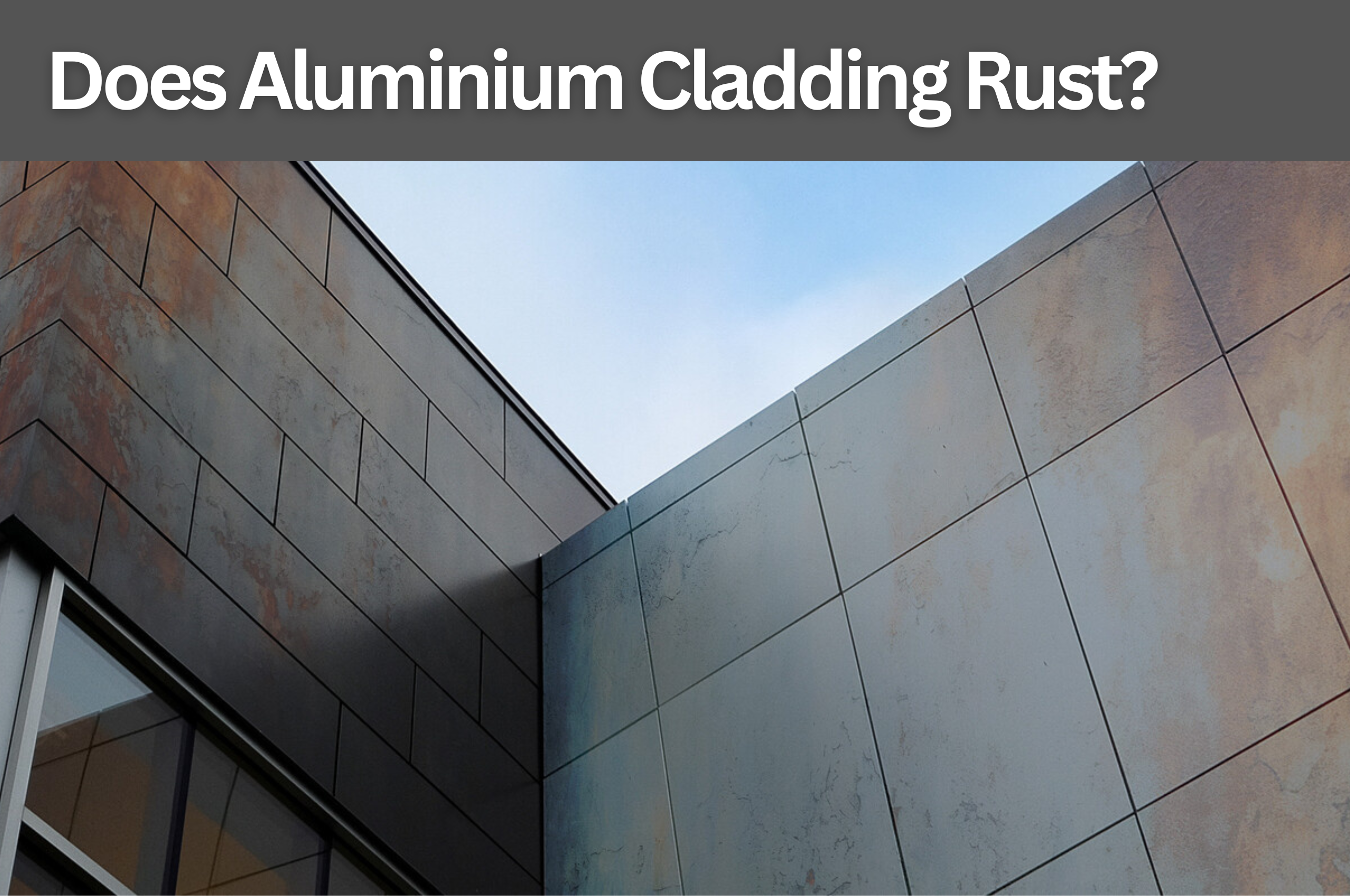Finish Facades Knowledge Base
Why Cladding is Necessary for Buildings?
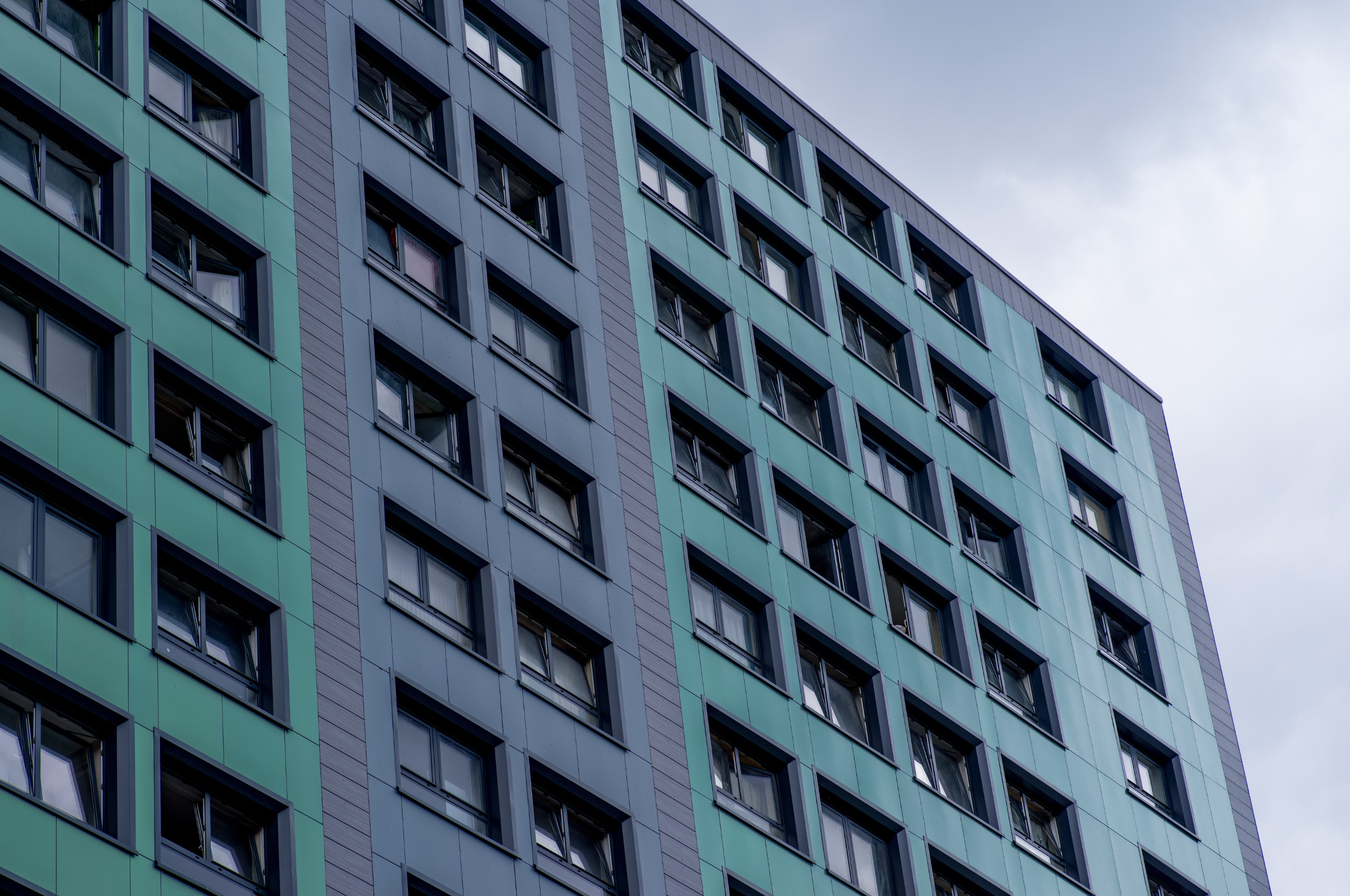
Cladding is more than just a fancy outer layer for buildings. It’s necessary for buildings. It plays a crucial role in protecting the structure and making it look good. But here's the thing - not all cladding is created equal. Certain types of cladding can pose serious dangers, especially when it comes to fire safety.
In the unfortunate event of a fire, using the wrong cladding can significantly increase the risk of fire spreading throughout a building But don't worry, in this article, we'll explore the ins and outs of cladding, and how choosing the right cladding materials can significantly impact the safety of building occupants.
What is Cladding in Construction?
Cladding refers to the process of covering the exterior of a building with materials such as brick, metal, or glass. It serves both functional and aesthetic purposes, protecting from the elements while enhancing the building's appearance.
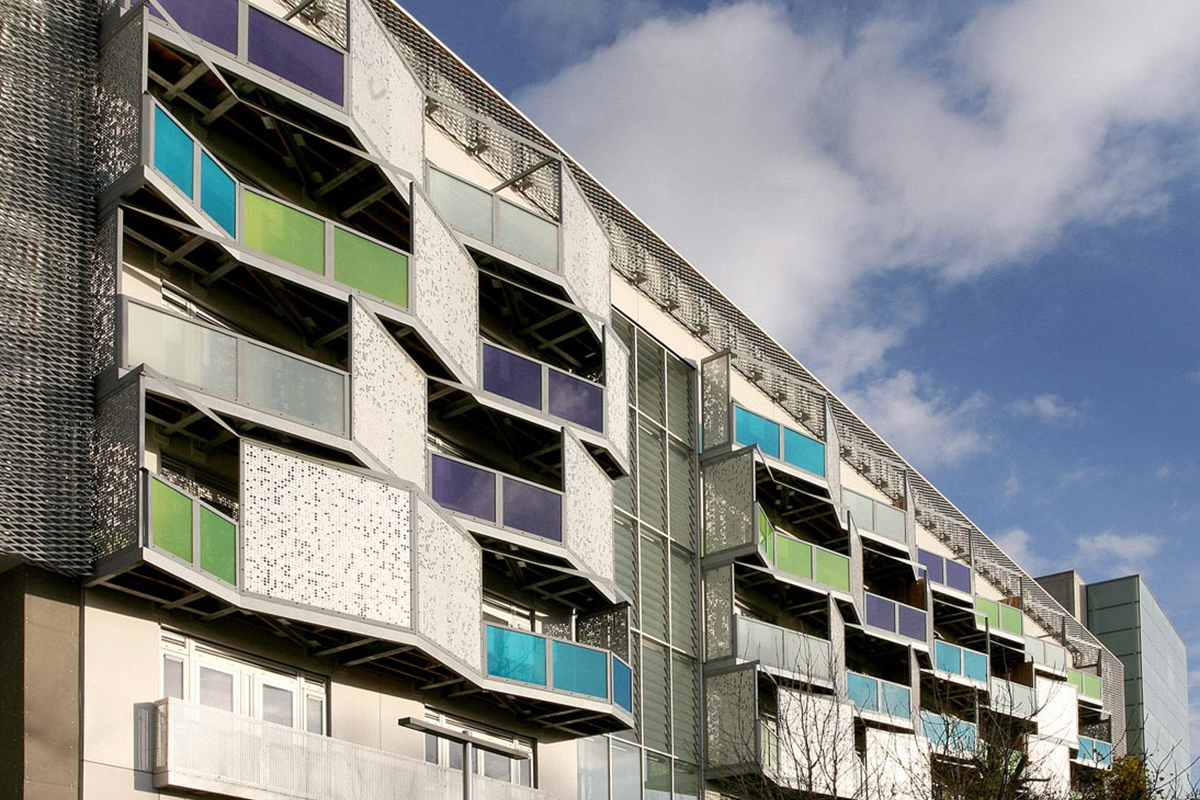
The Historical Evolution of Cladding Practices
Cladding in construction has undergone a significant historical evolution, transforming from traditional brickwork systems to a diverse range of materials and techniques utilised today.
In the past, buildings primarily used traditional brickwork cladding for its durability and aesthetic appeal. However, advancements in technology and architecture have led to the development of new cladding systems, such as metallic rainscreens, glass curtain walls, and composite materials.
These cladding solutions offer improved performance, energy efficiency, and design versatility in modern construction projects.
Types of Cladding Materials Used
Now, we’ll explore the diverse range of cladding materials used in the construction sector. Our focus will extend to various options, each characterised by unique features and aesthetic values.
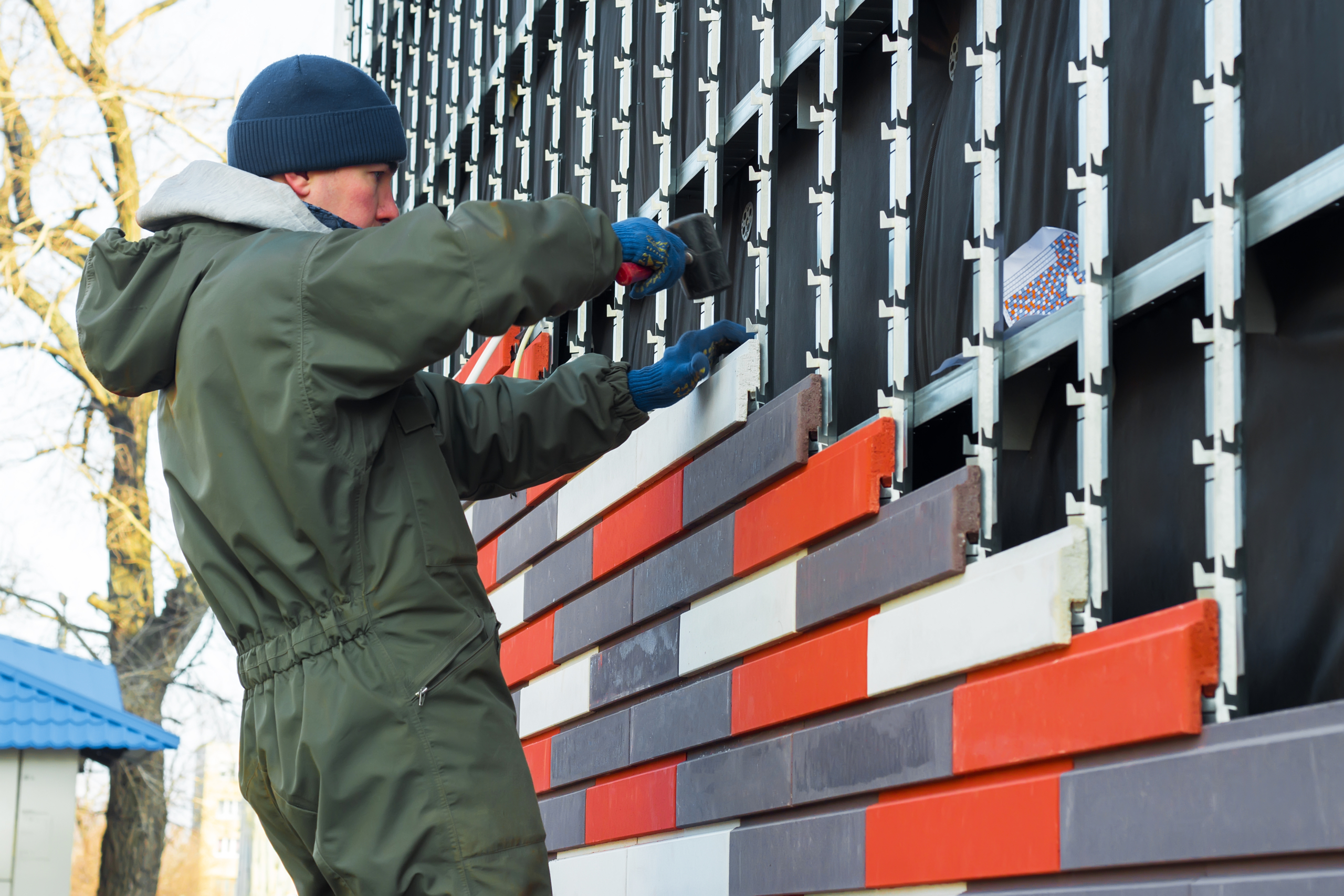
Rainscreen Aluminium Cladding Explained
Rainscreen aluminium cladding, consisting of lightweight aluminium panels attached to a framework, provides a sleek and modern aesthetic while protecting buildings from external elements such as rain, wind, and snow.
It offers insulation, ventilation, and drainage, preventing moisture infiltration. The aluminium panels are durable, resistant to corrosion, and customisable with various colours and finishes. This type of cladding is becoming increasingly popular due to its lightweight nature, low-maintenance requirements, and long-lasting appearance.
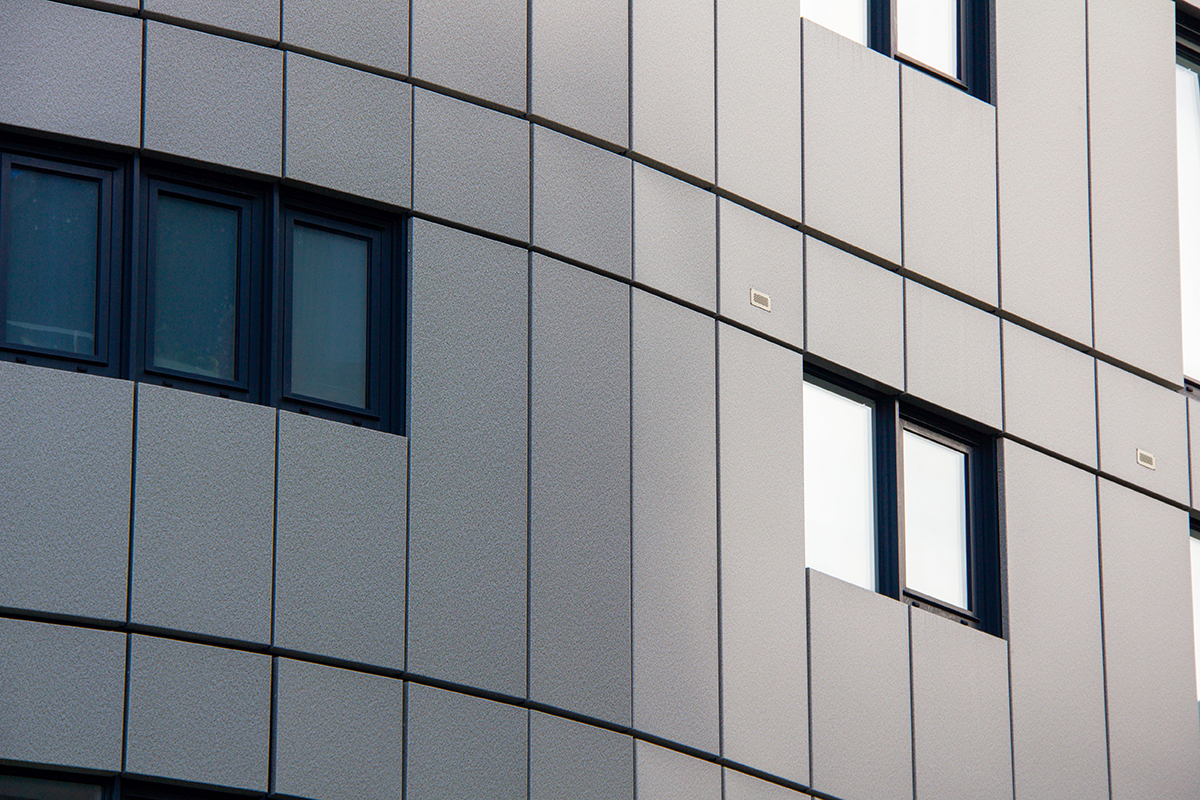
Metal Cladding Explained
Metal cladding, known for its durability and versatility, provides a wide range of options for building exteriors. It is one of the most popular choices due to its ability to withstand harsh weather conditions and its low maintenance requirements.
Common types of metal cladding materials include aluminium, steel, zinc, and copper. Each material offers unique aesthetic qualities and can be customised to fit the specific design requirements of a building. Metal cladding is not only functional but also adds a modern and sleek appearance to any structure.
What are Some Other Popular Cladding Materials Used?
When it comes to cladding options, several popular materials are commonly used in building exteriors. Some of these materials include traditional brickwork systems, rendered systems, metallic rainscreen systems, and glass curtain walls.
Each of these materials offers different aesthetic and functional qualities, allowing builders and architects to choose the best option for their specific project. It's important to consider factors such as durability, maintenance, and fire resistance when selecting the appropriate cladding material.
Timber Cladding
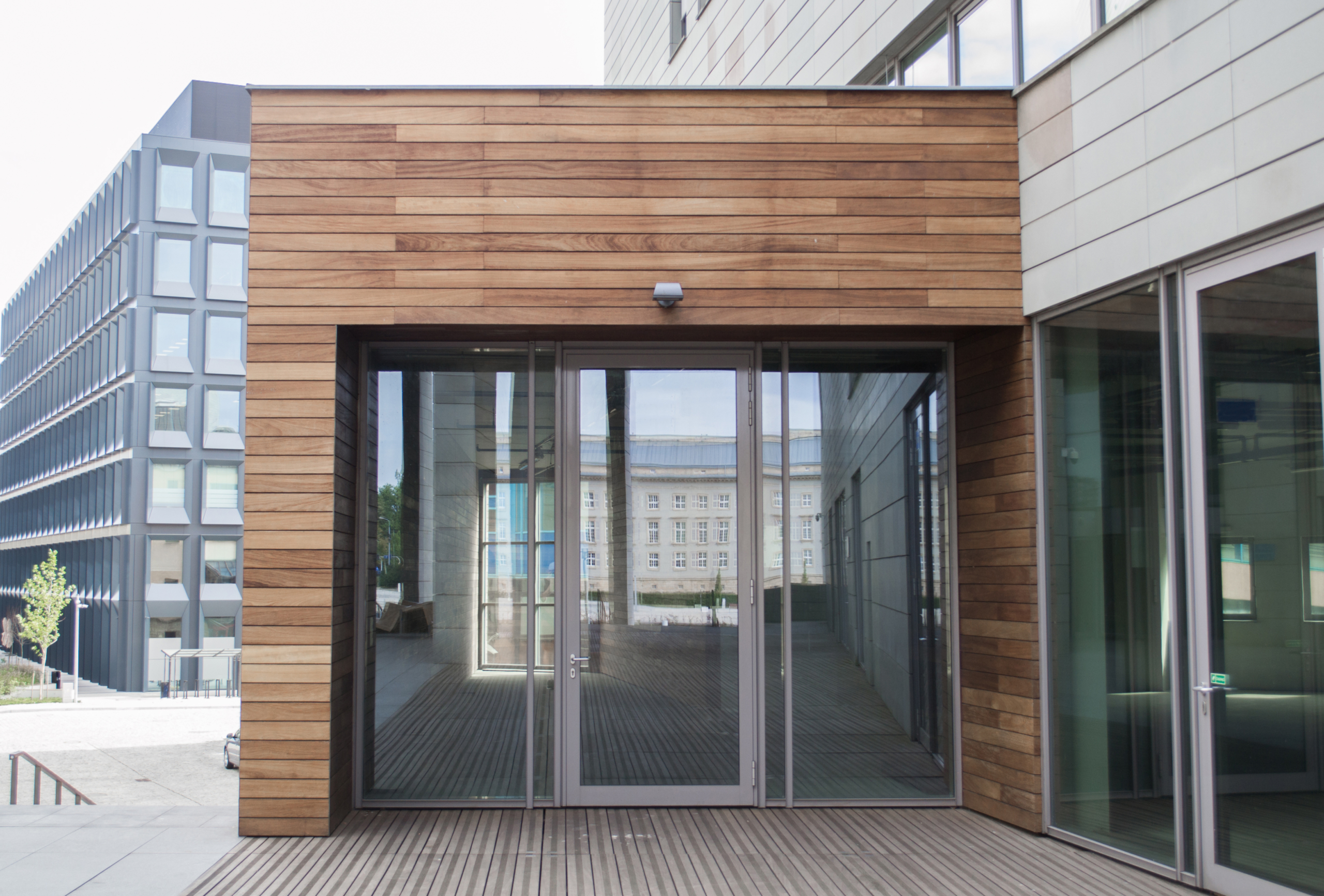
Timber cladding is a popular choice among builders and architects for its natural aesthetic and versatility in construction projects. It offers a warm and inviting look to buildings, making it suitable for both residential and commercial properties.
Timber cladding comes in various forms, including shiplap, feather edge, and tongue and groove. Each type has its unique characteristics, allowing for creative designs and giving buildings a distinct visual appeal. Timber cladding is also known for its durability and ability to withstand harsh weather conditions.
Glass and Synthetic Cladding Options
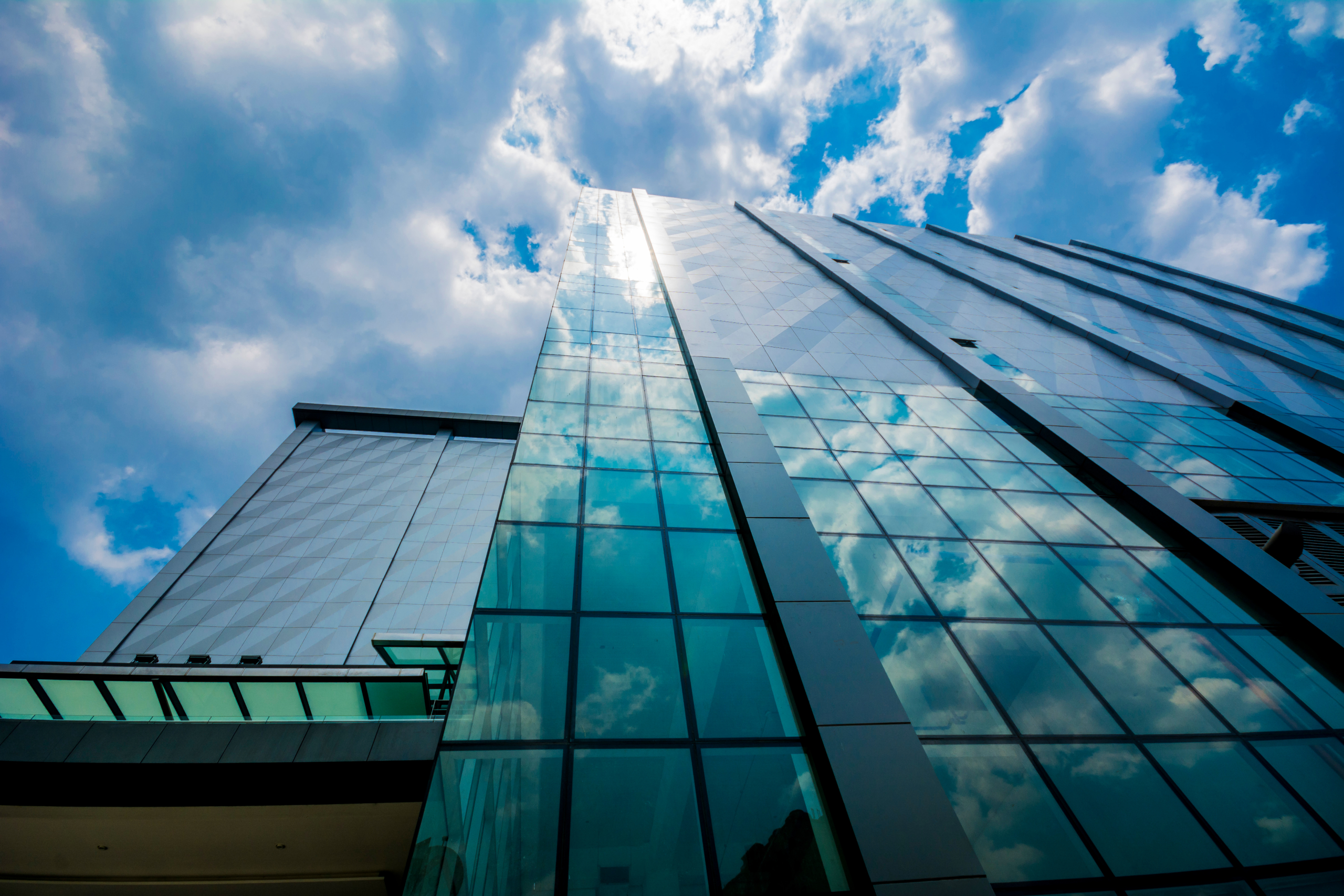
Exploring further, we delve into glass and synthetic cladding options, each offering unique benefits. Glass curtain walls, a popular choice, provide a modern aesthetic and natural light enhancement. Synthetic options, including ACM and HPL, offer versatility and design freedom.
However, selecting materials with a deep sense of responsibility and empathy is crucial, especially in light of the lessons learned from the Grenfell Tower tragedy. This solemn reminder underscores the vital need to prioritise safety in all our building materials and methodologies
What are The Safety Issues With ACM Cladding?
ACM cladding, in particular, has come under scrutiny for its high flammability, which can significantly contribute to the rapid spread of fire in buildings. This was tragically highlighted in the Grenfell Tower fire of 2017, where ACM cladding with a polyethene core played a role in the swift escalation of the blaze.
As a result, the UK government has now banned the use of Metal Composite Material (MCM) with unmodified polyethene (PE) core in the construction of buildings, regardless of their height. It's important to note that this ban applies specifically to certain types of ACM cladding with particular characteristics.
In the wake of the Grenfell disaster, extensive cladding remediation work has been undertaken on numerous buildings identified with unsafe ACM panels. While not all ACM cladding materials are prohibited, the incident has led to a heightened awareness of the need for safer cladding choices.
As we explore synthetic options like HPL and other safer ACM variants, which offer durability and design versatility, the emphasis remains firmly on selecting materials that ensure both aesthetic appeal and meet stringent safety standards.
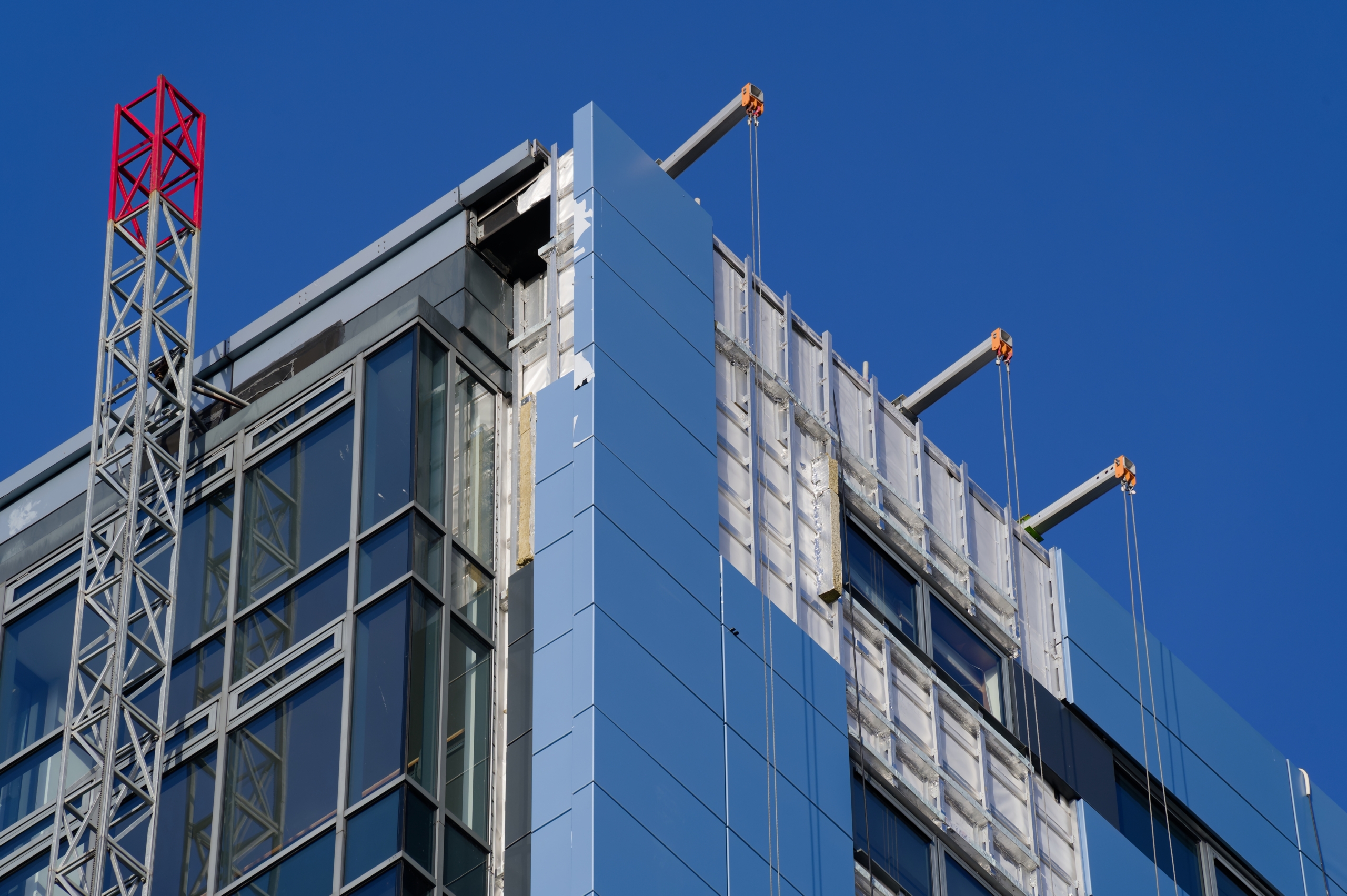
Why is it Important to Ensure That Your Building's Cladding is Fire-resistant?
It is crucial to ensure that your building's cladding is fire-resistant to prevent the rapid spread of fire. Lessons learned from major fire incidents highlight the importance of fire safety in cladding design. By ensuring that your cladding is fire-resistant, you can mitigate the risk of fire spreading and protect the lives and property within your building.
Lessons to Learn from Fire Incidents
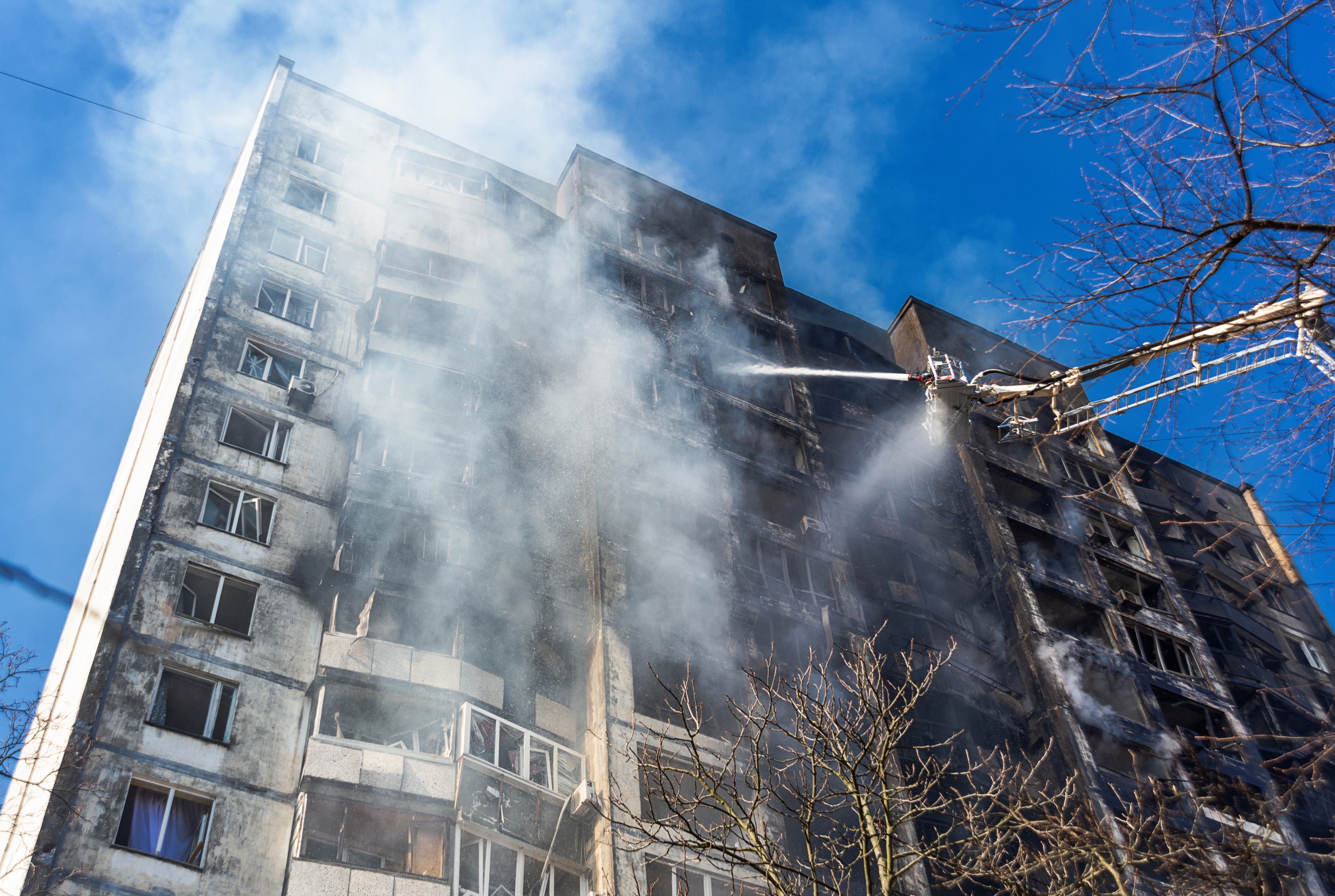
Why is it crucial to ensure that your building's cladding is fire-resistant and capable of withstanding major fire incidents? Major fire incidents can lead to extensive structural damage, endangering the safety of occupants and causing disruptions to businesses and communities.
Effective fire testing methods and standards play a crucial role in identifying potential risks and vulnerabilities in building materials and systems. By evaluating the fire performance of external cladding systems, we can mitigate the impact of fire incidents and prioritize the safety of buildings and their occupants.
Ensuring Fire Safety in Cladding Design
Ensuring fire safety in cladding design is paramount. It involves rigorous fire resistance testing, such as the BS8414 method, to evaluate performance under fire conditions. These tests assess flame spread, heat release, and stability, ensuring the cladding meets the highest safety standards
By implementing strategies to prevent fire spread via cladding, such as using non-combustible materials and incorporating fire-stopping measures, you can minimize the risk of fire and protect your building and its occupants.
Fire Resistance Testing for Cladding
Ensuring that your building's cladding is fire-resistant is crucial for maintaining fire safety and compliance. Fire resistance testing, such as the BS8414 method and BR135 guidance, assesses the performance of cladding systems in high-rise buildings. These tests evaluate factors like flame spread, smoke production, and structural integrity.
Additionally, EN 13501-1 testing classifies construction products based on their reaction to fire. By conducting these tests, weaknesses in the cladding system can be identified and necessary measures can be taken to ensure fire safety.
Strategies to Prevent Fires Spreading Through a Building’s Cladding
By conducting fire resistance testing for your building's cladding, you can identify weaknesses in the system and implement strategies to prevent the spread of fire. One effective strategy is to use non-combustible cladding materials, such as stone cladding systems with mineral wool, cement boards, or concrete panels.
Additionally, ensuring the installation of effective cavity barriers can slow down the vertical spread of fire. These proactive measures are crucial in safeguarding your building and its occupants from the dangers of fire spread via cladding.
How to Select Suitable Cladding Materials - Factors to Consider
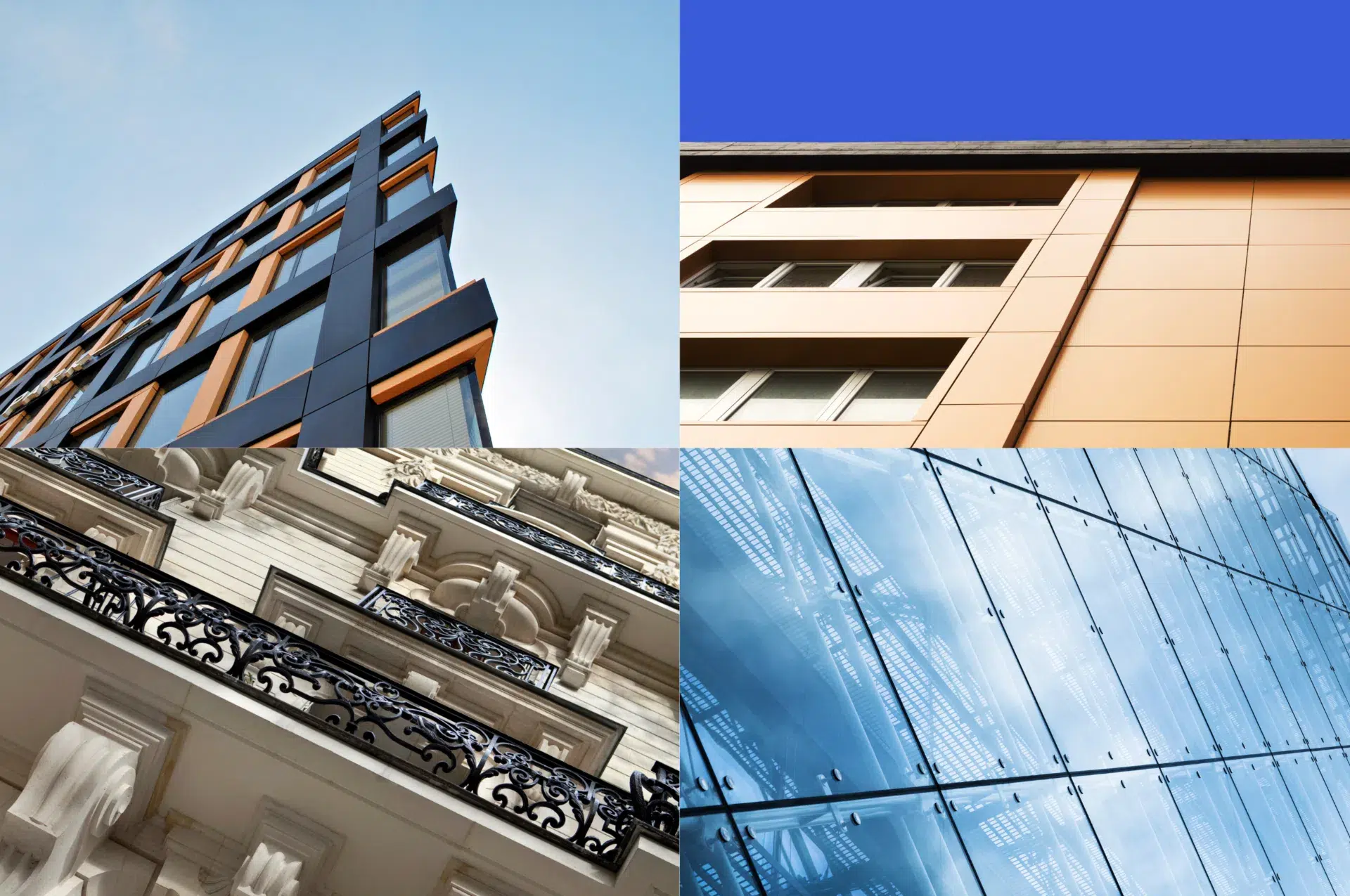
When selecting suitable cladding materials, there are several factors you should consider. First, think about the overall aesthetic you want to achieve for your building. Next, evaluate the durability and maintenance requirements of different materials.
Lastly, take into account the climate and environmental conditions of your location to ensure the cladding can withstand the elements. By carefully considering these factors, you can choose the right cladding materials that meet both your functional and aesthetic needs.
Aesthetics
Aesthetics play a crucial role in the selection of cladding materials for buildings. The appearance of a building's exterior is often the first impression people have, making it important to choose cladding that enhances the overall aesthetic appeal.
Whether it's a sleek and modern design, a traditional and timeless look, or something unique and eye-catching, the right cladding materials can greatly contribute to the visual appeal and character of a building.
Durability
Durability is a crucial factor to consider when selecting cladding materials for a building. The cladding will be exposed to various environmental elements such as rain, wind, and sunlight, which can lead to wear and tear over time.
Choosing a durable cladding material ensures that it will withstand these conditions and maintain its integrity for an extended period. Additionally, durability helps to minimize the need for frequent maintenance and replacement, making it a cost-effective choice in the long run.
Environmental Impact
Considering the long-term sustainability of your cladding selection is essential, as the environmental impact of the materials used can greatly affect the overall performance and ecological footprint of the building. The choice of cladding materials can contribute to energy efficiency, reduce carbon emissions, and promote sustainable practices.
Opting for environmentally friendly materials can help minimize waste, conserve resources, and support a healthier environment for both the occupants and the surrounding ecosystem.
Thermal and Structural Performance Factors
The thermal and structural performance of the cladding is crucial when selecting suitable cladding materials for your building. The thermal performance determines how well the cladding can insulate the building, helping to regulate temperature and reduce energy consumption.
The structural performance ensures that the cladding can withstand the forces and loads placed upon it, providing stability and durability to the building. Considering these factors will help you choose cladding materials that are efficient, long-lasting, and contribute to the overall performance of your building.
Installation and Maintenance Guidelines of Cladding
Now let's talk about the best practices for cladding installation and the maintenance strategies that can ensure the longevity of your cladding.
Following these guidelines will help you ensure a proper and durable installation, and also help you maintain the cladding in good condition for years to come. By implementing these practices, you can enhance the overall performance and lifespan of your cladding system.
Best Practices for Cladding Installation
To ensure proper installation and maintenance of cladding, it is essential to follow industry best practices. Firstly, it is important to hire qualified professionals who have experience in cladding installation. They should be familiar with the specific type of cladding being used and follow manufacturer guidelines.
Additionally, proper preparation of the building surface is crucial to ensure a secure and durable installation. Regular inspections and maintenance should also be conducted to identify and address any issues promptly.
Maintenance Strategies for Longevity
For optimal longevity of cladding, proper installation and regular maintenance are essential. When it comes to installation, make sure to follow the manufacturer's guidelines and use qualified professionals. Regular maintenance includes inspecting the cladding for any signs of damage, such as cracks or loose panels, and promptly addressing them.
Cleaning the cladding regularly and removing any dirt or debris will also help maintain its appearance and functionality. By taking these steps, you can ensure that your cladding lasts for years to come.
Advantages of Using Aluminium Rainscreen Cladding
Discover the numerous advantages of using aluminium rainscreen cladding for your building. From improved thermal performance, corrosion-resistance and enhanced energy efficiency to extended lifespan and reduced maintenance costs, aluminium cladding offers a range of benefits.
Aluminium rainscreen cladding also provides effective moisture management and customisable design options, but it also ensures durability and low maintenance, making it a reliable choice for your building's exterior.
However, one of the most noteworthy advantages of aluminium rainscreen cladding is its corrosion resistance.
For more information, read this article explaining how aluminium cladding is corrosion-resistant.
Navigating Building Regulations and Standards
When navigating building regulations and standards, one advantageous option to consider is the use of aluminium rainscreen cladding. This type of cladding is widely accepted and compliant with building regulations due to its non-combustible properties.
It provides an effective barrier against fire spread and meets the requirements for high-rise buildings. By choosing aluminium rainscreen cladding, you can ensure compliance with building regulations while also benefiting from its durability, weather resistance, and aesthetic appeal.
Adherence to Safety and Environmental Regulations
Aluminium rainscreen cladding is not only crucial for meeting safety regulations but also for environmental sustainability. Its fire resistance, durability, and aesthetic appeal make it a responsible choice, aligning with the UK's increasing focus on sustainable building practices
Aluminium is inherently fire-resistant, protecting the building and its occupants. Additionally, it is a durable material that can withstand harsh weather conditions. Furthermore, aluminium cladding provides an attractive and modern appearance, enhancing the overall aesthetic appeal of the building.
Transform Your Project with Advanced Aluminium Framing Systems
Elevate your building's appeal and safety with Finish Facades' Aluminium Cladding Framing Systems. Expertly crafted to support cladding panels and enhance ventilation, these systems are designed for durability and ease of installation. Our aluminium framing is not only lightweight and strong but also meets the highest safety standards with a non-combustible rating of A1 or A2 S1 d0.
Choose Finish Facades for systems that combine aesthetic flexibility with cost efficiency. Our aluminium framing withstands various weather conditions, improves thermal efficiency, and offers a range of finishes to match any design specification.
Learn More
Need more information?
To see how Finish Facades could support your next project - simply call us, or use the form below.
